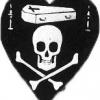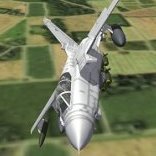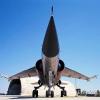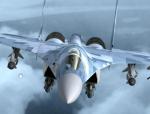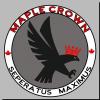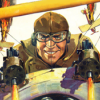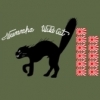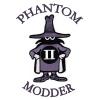Leaderboard
Popular Content
Showing most liked content on 02/20/2018 in all areas
-
8 pointsLOFT radar bombing ... prepare .. drop ... fly my bomb, fly ... ... and miss, but not much ;-)
-
7 points
-
7 points
-
2 pointsHellcats box art (from GiantBomb) Have you ever had the bug to play an old sim? Say, European Air War or Jane's Longbow. What about Hellcats Over the Pacific, or A-10! Attack? Wait… you may be saying, I've never even heard of these sims! I understand if you haven't, as these sims were released only for MacOS, an operating system most hardcore sim pilots have never even considered. In the 1990's, however, there was a very large, and rather unique simulation community built around the Macintosh. While many PC sims such as A-10 Tank Killer and Armored Fist were only starting to scratch the surface of "True 3D", with voxel graphics rendering low resolution textures, Mac developers knew they would have to take some risks to achieve the greatness that was already on full display on the DOS/Windows shelves of CompUSA and ElekTek. Their solution? A typical Mac developer response. They would sacrifice the then high resolution, "photo-realistic" textures for flat shaded polygons to create fully realized 3D worlds and models, including real-time shadows and highly accurate physics. From Wikipedia: "Hellcats was a major release for the Mac platform, one of the first 3D games to be able to drive a 640 x 480 x 8-bit display at reasonable frame rates in an era when the PC clone's VGA at 320 x 240 x 4-bit was the standard." Having only had my parent's Mac to play on, and being crazy about flying (thanks to them no less!) I dove into this world full bore. My first experience in this new world of flight was Microsoft Flight Simulator 4.0, a fantastic sim I taught myself how to play at the young age of five, mostly by trial and error. Soaring above the Chicago skyline in my Cessna 182RG was truly amazing for my young self, but something was lacking. That something was obviously guns. By 1991, I was six years old. With the combination of ever increasing hours of time spent in FS4 and the excitement of reading about the air to air victories from the just ended Gulf War, I was ready. During a trip to the store I saw the game I wanted, and I begged my parents to get it for me. Amazingly enough, they actually relented. Soon, I knew, I would be soaring over tropical locales and splashing Zeroes! Hellcats Over The Pacific was released in 1991 by Graphsim Entertainment, who would go on to release the excellent Hornet series a few years later, which will be the subject of a future write-up. Developed by Parsoft Interactive and coded by Eric Parker, it would become maybe the most popular sim ever released on the Macintosh. Sporting bright graphics, excellent physics and flight models, and rudimentary carrier ops it was, much like its namesake the F6F Hellcat, truly a beast to be reckoned with that outclassed and outdated all opponents. Bagging a Zero at the merge. You can see the rudimentary "radar" here (Photo courtesy of mobygames.com) Taking place on a large map of the Solomon Islands, it focused on the Battle of Guadalcanal and related engagements in "The Slot". The missions themselves were rather basic, with accordingly basic mission names. "Bomb Base" for instance had you bombing a Japanese held airfield, which would eventually become Henderson. "Scramble!" is pretty self-explanatory, take off, shoot down the G4M Betty while mixing it up with a pair of escorting Zeroes. Rarely were there more than just a few aircraft in any given scenario. Typically no more than four or five, including your aircraft, most likely to keep memory usage down. Only two missions ever had you flying with allied aircraft, the first an escort mission with a B-17 called, you guessed it, "Flying Fortress". And the final mission of the game, "The Duel", paired you up with ultimate Hellcat ace Cpt. David McCampbell (34 victories, including 9 in one sortie, and the Medal of Honor). Number two behind McCampbell (Photo courtesy of mobygames.com) A particularly grueling trial came in the form of the mission "Flat Top" where you needed to bomb and sink an opposing Japanese carrier. One bomb usually wouldn't do it, and it was hard to get both on target with the massive AAA fire from the surrounding task force. Sometimes this meant multiple sorties in a single mission, returning to trap on the carrier over and over till you finished. Since many flight sims don't include an in-mission re-arming mechanic, this made this fairly unique, especially considering the fact that in many missions you would be returning to the carrier, and not a nice long stretch of concrete. Trapping once is tough enough, but doing it multiple times per mission seriously heightened the challenge! Another tricky mission was "Divine Wind" where you needed to defend your carrier against kamikaze attacks. As the enemy aircraft spawned at a regular interval there was usually no time to return to base and rearm, necessitating careful ammunition and fuel management. With the carrier sinking, the mission is effectively over. (Photo courtesy of mobygames.com) But like all things, it was not without its problems. Chief among them was the seriously lacking draw distance, a common issue amongst many games in the nineties. It is not typically an issue in say, an RTS or corridor FPS shooter, but in flight sims, the farther you can push the draw distance, the better off you are, and the more immersive it becomes. Unfortunately, the distance in Hellcats was short even for the time, making strafing runs on enemy airfields with parked aircraft and long distance intercept missions harder than they probably needed to be. The work around was a sort of radar, in the center of the instrument panel. This radar gave a 360 view around the aircraft out to a few miles, with other aircraft represented as white dots. The enemy AI was also quite lacking. Most engagements typically quickly devolved into a tight turning fight that the Hellcat could easily win by use of the aircraft's flaps to gain a significant turning advantage over the opposing Zero. This was a feature the Hellcat did not have, but that ironically, many Japanese fighters did. The hit detection was spotty at close ranges, causing many bullets to simply pass through the opposing aircraft and simply drain away your ammo. At longer ranges accuracy was better, but many times the enemy would simply smoke then ditch, requiring close in strafing runs near the ocean's surface to get credit for the kill. I can still remember my first kill in any combat sim ever, a snapshot with a deflection angle of nearly 90 degrees. I turned sharply to the right to chase and was rewarded with a swiftly descending, and heavily smoking Zero. It's an image forever burned into my mind, and I was hooked. For better or for worse, I had begun a lifetime obsessed with the skill curve of the Combat Sim. It was a fun jaunt into the past writing this article. I even remembered most of the key bindings! If you're ever looking into the retro-sim scene yourself, don't count out the Macintosh platform. There are several other great sims from this era for the mac, a few of which will be the subjects of future articles. If anyone would like to know how to get into the world of emulating Mac or DOS games for a similar trip down memory lane, PM me. I'll get back to you as soon as I can! Thanks for reading, good luck, and good hunting.
-
2 points
-
2 points
-
2 pointsWhile going through WOV and other TW games I checked and double-checked all available loadouts. Sadly not one of them has a 'constant' animation. So the major Problem is, that the streamers are not part of the airplane LOD object. Animations for loadouts, as far as I've seen, can only be 'triggered' by launching them (missiles, etc.)
-
2 points
-
2 points
-
2 points
-
2 points
-
2 points
-
1 point
-
1 point
-
1 pointThanks I guess the FAB-4852 is a give away...unfortunately I have it in the wrong folder.
-
1 pointThe time complexity of the lookup in a table with a fixed data interval is constant. That means the number of entries in the table shouldn't matter.
-
1 pointnot sure who made old one... but i know who made this.... so .... it is on CA...in download section Special Hercules Over Vietnam.. but there is no really target drone model...at least not yet...
-
1 pointbaffmeister, you might take a look at Geezer's 1930's Bomb Pack which I think was in the FE downloads. He includes British, Italian and German bombs from the late 1920's through 1945. I just got back into the WW2 material, and have been trying to update the old bomb models. Some of the weapons are pretty long in the tooth. Ravenclaw has some dazzling dumb bombs, HVARs and RP-3 models that will fit the time frame and make your ordinance look good.
-
1 point
-
1 point
-
1 pointFor serious constructive BETA testing of the campaigns please guys as its not a finished product :) StrikeFighters2 KAW68.7z Objects.7z Aircraft.7z ***** You will need to delete my options.ini and version.ini files as i forgot to before I uploaded. ***** Notes. SAM sites: This terrain does not correctly set up Red or Blue SAM sites. As a work around there is a SA-2 launcher set up as ‘static AAA’ that has its own built in Fansong search/ tracking radar and 5x missiles. The same thing has also been done with a MIM-14 Nike Hercules 4x missile battery. Nuclear weapons: There are no offensive tactical nuclear weapons however the South Korean Nike Hercules missiles are equipped with 2kt nuclear warheads as they would have been at the time. Also the F-106A and F-102A utilise the nuclear 1.5kt AIR-2A and 250t AIM-26A missiles respectively by default on an ‘intercept’ mission. Falcon Missiles: The stock TW AIM-4D Falcon has had its performance data dumbed down in order (I presume) to represent its poor performance when used by the F-4D Phantom in the game. However the reason the Falcon missile performed so badly when used by the F-4D was more to do with it being used outside its engagement parameters and the complex/ lengthy manual firing process the F-4D could only used. When used as designed by the fire control computer (FCS) of the F-102A/ F-106A and fired within its parameters (the FCS assisted the pilot with this) the Falcon was as effective as any other missile system of the era. In fact the IR seeker of the AIM-4D/ AIM-4G was the best on any IR missile until the AIM-9L was developed. As such I have corrected the data for all the Falcon missiles. To simulate the difficulty of manually preparing and firing an AIM-4D Falcon missile by a F-4D I have included the 6 second release delay in a specific AIM-4D used only by the F-4D Phantom in the game. F-106A: The AIM-4G station is not internal it is external so the AI will still engage with the missile as the AI will not use an internal IRM. I have the weapon doors set to manual opening. I also have a unique versions of both the AIM-4F and AIM-4G that combines the statistics of two missiles so it has the same kill probability of ripple firing two missiles as one. This is because the F-106A could ONLY fire its AIM-4 missiles in similar pairs. I use these missiles for the AI aircraft since as the player you can manually ripple fire two of the standard missiles at a time etc you just have to change your loadout at the loadout screen. In short the F-106A could fire a salvo of 2x AIM-4F, a salvo of 2x AIM-4G and a single AIR-2A Genie. To simulate this with the AI aircraft there is a single missile (AIM-4F_2_1) that represents the salvo firing of 2x AIM-4F and another missile (AIM-4G_2_1) that represents the salvo firing of two AIM-4G. F-102A: Same story as above with the F-106A and its Falcon missiles except the F-102A carried and fired its missiles in three’s. E.g. 3x AIM-4D on the rear rails all fired at once and 3x AIM-4A on the front rails all fired at once. However when carrying an AIM-26A/B it replaced one of the AIM-4A Falcons on the front centre rail. This means the F-102A could fire a single AIM-26A/B, a salvo of three AIM-4D, a salvo of two AIM-4A and its unguided FFAR rockets. Once again to simulate this with the AI aircraft there is a single missile (AIM-4D_3_1) that represents the salvo firing of 3x AIM-4D and another missile (AIM-2A_2_1) that represents the salvo firing of two AIM-4A.
-
1 point
-
1 pointWrench's SF2 KAW Terrain adds a whole new dimension to SF1 KAW. (Have a little shimmering in the trees, but still great.)
-
1 pointHi everyone, thought it might be a good idea to reach out here especially since we always welcome and encourage community member support! Summer typically brings a slow down in availability/progress. Are you a 3d modeler or texture artist? If you have availability/interest in contributing to the When Thunder Rolled project on either a volunteer or paid-basis, please send me a private message. Thanks for reading and your consideration! More project details here in case you missed it: http://combatace.com/forum/295-wtr-general-discussion/ Sample 3d Models and Texture Work:
Important Information
By using this site, you agree to our Terms of Use, Privacy Policy, and We have placed cookies on your device to help make this website better. You can adjust your cookie settings, otherwise we'll assume you're okay to continue..

